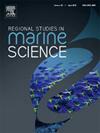Bioeconomic analysis of Egyptian mediterranean and red sea fisheries: Implications for sustainable management
IF 2.1
4区 环境科学与生态学
Q3 ECOLOGY
引用次数: 0
Abstract
Egyptian marine fisheries face the same challenges as most of the world’s fisheries including overfishing. This research provides an assessment of the stock and economic situations of marine fisheries in both the Mediterranean and Red Seas of Egypt. Key objectives are to assess the biological status of these fisheries, evaluate suitable surplus production models, and estimate Maximum Sustainable Yield (MSY) with its corresponding effort (EMSY). Additionally, the study determines economic benchmarks like Maximum Economic Yield (MEY) and Open Access Equilibrium (OAE), and proposes management recommendations based on these bioeconomic analyses. The analysis employs catch and effort data to determine biological parameters using surplus production models. The Clarke-Yoshimoto-Pooley (CY&P) model was selected to estimate MSY and fishing effort in MSY (EMSY), as it was considered the most suitable for this purpose; a bioeconomic model based on CY&P was also developed. The CY&P model estimations for 2016 show that actual fishing effort in the Mediterranean Sea (498,423 horsepower (HP)) was more than double the target EMSY (243,768 HP). Similarly, in the Red Sea, effort (296,391 HP) exceeded its EMSY (175,947 HP), indicating severe overexploitation and stock depletion in both regions. The study underscores the critical need for substantial fishing effort reductions—around 51.1 % in the Mediterranean and 40.6 % in the Red Sea—to reach EMSY targets. Primary management recommendations derived from this study focus on implementing stringent effort controls, gear-specific measures, and improved fishery monitoring to facilitate stock recovery and optimize economic benefits.
埃及地中海和红海渔业的生物经济分析:对可持续管理的影响
埃及的海洋渔业面临着与世界上大多数渔业相同的挑战,包括过度捕捞。这项研究提供了对埃及地中海和红海海洋渔业资源和经济状况的评估。主要目标是评估这些渔业的生物状况,评价适当的剩余生产模式,并估计最大可持续产量及其相应的努力量(EMSY)。此外,该研究确定了最大经济产量(MEY)和开放获取平衡(OAE)等经济基准,并根据这些生物经济学分析提出了管理建议。该分析采用捕获量和努力量数据,利用剩余产量模型确定生物参数。选择clark - yoshimoto - pooley (CY&;P)模型来估计MSY和MSY (EMSY)中的捕捞量,因为它被认为是最适合的;并建立了基于CY&;P的生物经济模型。CY&;P模型对2016年的估计显示,地中海的实际捕捞量(498,423马力)是目标EMSY(243,768马力)的两倍多。同样,在红海,渔获量(296,391马力)超过其最高可持续产量(175,947马力),表明这两个区域严重过度捕捞和鱼类枯竭。该研究强调,为了达到EMSY目标,迫切需要大幅减少捕捞量——地中海约为51.1% %,红海约为40.6% %。本研究提出的主要管理建议侧重于实施严格的努力控制、特定渔具措施和改进渔业监测,以促进种群恢复和优化经济效益。
本文章由计算机程序翻译,如有差异,请以英文原文为准。
求助全文
约1分钟内获得全文
求助全文
来源期刊

Regional Studies in Marine Science
Agricultural and Biological Sciences-Ecology, Evolution, Behavior and Systematics
CiteScore
3.90
自引率
4.80%
发文量
336
审稿时长
69 days
期刊介绍:
REGIONAL STUDIES IN MARINE SCIENCE will publish scientifically sound papers on regional aspects of maritime and marine resources in estuaries, coastal zones, continental shelf, the seas and oceans.
 求助内容:
求助内容: 应助结果提醒方式:
应助结果提醒方式:


